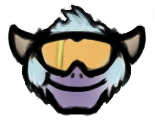For week 3 of the semester, the team focused on ideation and laying the groundwork for efficient development of the project.
Following the previous week’s research, the team members thought individually about directions the project could go and interesting possibilities our project presented. We then brought our ideas together and had a long brainstorming session to play of each other and build out each other’s ideas as much as possible. From there, the team’s efforts became distributed across roles.
Production
Production and Design both worked to pull out the areas from the brainstorm that generated the most interest and add some structure. Besides general organization throughout the week, James reached out to the advisors to set up meetings for feedback, condensed the design outline into a more succinct presentation for the client, and reached out to our client, Jen Smith, with the presentation and to solidify meeting details.
Design
At the beginning of the week, Christian pulled the most the top ideas of interest from the team’s brainstorm and developed those into more structured game outlines. After feedback from the team’s advisors, he pulled prototypable mechanics from the outlines and worked with James to ensure clarity and communicate them to the team’s programmers, Levi and Ken. At the end of the week he pooled the core curriculum points of interest the client provided and worked with the team to align those with their current game ideas.
Art
This art team, split between Eric (modeler) and Shashank (rigging and animation) made good progress this week. Eric continued roughing out the forms for several arctic animals for future use and to get a feel for the scale, and completed the initial pass of the caribou model and began creating its normal map. Shashank spent the week building a quadruped skeleton. He made a general skeleton which could be applied to the majority of our animal models with some adjustment.
Programming
Ken and Levi met with production and design following the brainstorming process, and set about making prototypes of some of the core functionality which could be relevant across multiple ideas. They set up their working environments for using Unity with our Android tablets and had a player control with basic movement functional by the end of the week. They also began work for tracking device placement.
At the end of the week the team spoke with our advisors and the client. We discussed with the client the ideas we had presented and got feedback from her on each approach and dialogued about what we felt were their respective strengths and weaknesses. At the end of the meeting we reached agreement that our idea about the player taking on the role as a scientist explorer of the Tundra best met the client’s educational goals and would be exciting for the players. We planned to move ahead with development barring any unforeseen barriers.
Next Week
After our client meeting, the team discussed our approach moving forward and discussed any points of confusion. We were all excited to move ahead with the game, and happy with the idea we settled on with the client. We plan to hit the ground running next week, beginning our first 1 week sprint and plotting out a course of action to get as much done as possible before quarters.
YETI
